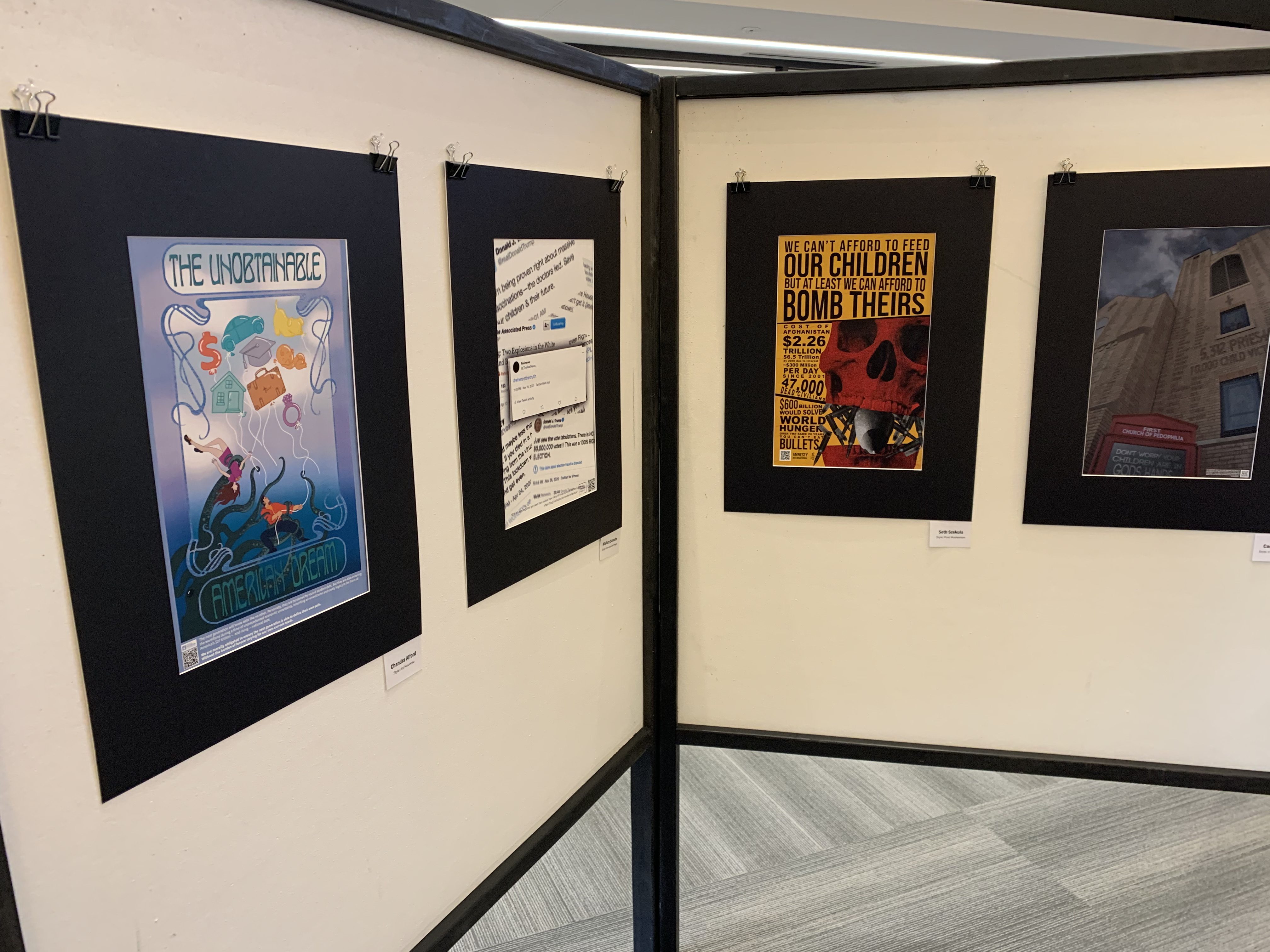BY LAURYN BECEKR
VIDEO BY LIZ STOECK
What started as a graphic design project has transformed into a project sparking a conversation between people of all majors, backgrounds, and political stances.
“The project started in 2007 at the request of the FHSU Chapter of the American Democracy Project (ADP). We were already doing the project in my History of Graphic Design class, however, we weren’t doing it specifically focused on political involvement,” Department of Art and Design Chair and Graphic Design Professor, Karrie Simpson-Voth, said. “FHSU was creating a civic engagement initiative on campus and asked if we could be involved by doing this project on the themes of ADP.”
Today, where politics are heavily discussed on a daily basis, the poster project allows for students to approach political subjects, as well as their stance on them, in a creative and thought-provoking way.
“The inspiration was to show the power of graphic design and the power of a graphic designer. It is important as American citizens (especially young citizens) to form their own opinions in order to be a good contributors to society,” Simpson-Voth said. “Although these posters are opinion-based, there is a lot of research that goes into each topic in order to support the imagery. The posters are centered around the idea of influencing, persuading, making an impact, and/or changing the way one thinks about civic engagement, citizenship, and democracy.”
The goal of this project, according to Simpson-Voth, is to not only show the power graphic design holds, but also to show how effective political posters are.
“The poster, as a medium, has not only managed to sustain its existence but has also continued to thrive as a significant art form as well as a powerful tool of communication,” Simpson-Voth said. “Not only is it the truest form of graphic communication, but the poster is also an effective tool of persuasion, a great force of change, and a mighty political weapon, as we have seen in examples of war posters from as early as WWI.”
Creating the posters, an eight-week process, is a creative and extensive process that takes lots of research, lectures from not only Simpson-Voth, but also the Political-Science department.
“We begin with lectures over ten design styles from the late 1800s to the present. From there, the students choose five of those styles to create their posters on concepts they come up with based upon their opinions and research.
“I also invite the chair of the Political Science Department to speak to the class to answer any questions about current events or government. We also discuss what a healthy news diet consists of and how one should look at all sides of an issue and at many different news sources (from conservative to liberal),” Simpson-Voth said.
As far as choosing which posters go up for exhibitions, Simpson-Voth stated that she chooses which to put up based on a list of criteria.
“Once the posters are complete, I choose the ones that will be in the exhibition based upon several factors: concept, style usage, message, how well the final piece turned out, and other technical aspects. Then we do numbered voting for the first week. After the ballots are tallied, I announce the winners and we replace the numbers with the names of the student designers and winners,” Simpson-Voth said.
This year’s winning poster was created by Megan LaRocque. She stated that her poster was inspired by her and a friend’s experiences.

“This poster was inspired by my friend’s experiences and my own of being held back from simple activities in fear of being sexually assaulted. I wanted to shed light on what women have to think about and go through everyday in comparison to men. Women shouldn’t have to carry this looming anxiety,” LaRocque said.
In creating this poster, LaRoque made two posters; the first what men would do if there were no women for a day, and the second what women would do if there were no men for a day. LaRoque stated that when she asked men what they would do, their answers were more on the joke side, whereas the women had very serious and extensive answers.
“To create this poster I began to ask women this question and then asked men. The men’s answers were jokes or they couldn’t think of anything, hence it being shorter,” LaRocque said. “The women, however, had ongoing answers. To illustrate the comparison, I created two posters.”
The posters were on display in the Art and Design Atrium from November 29th through December 10th.











We are so proud of Megan! Kathy and Phillip Kirchoff (Grandma and Grandma)